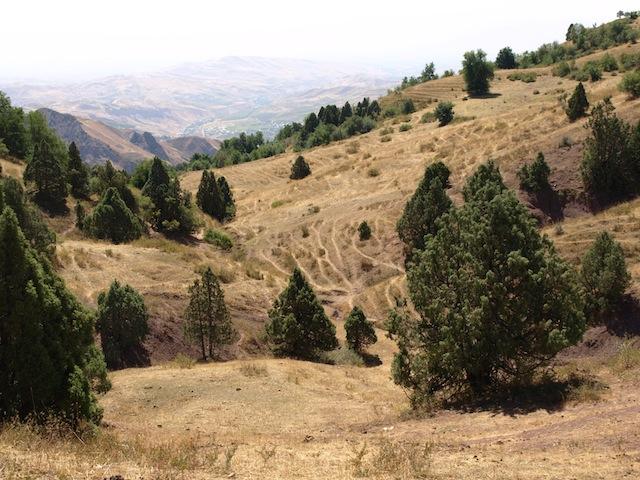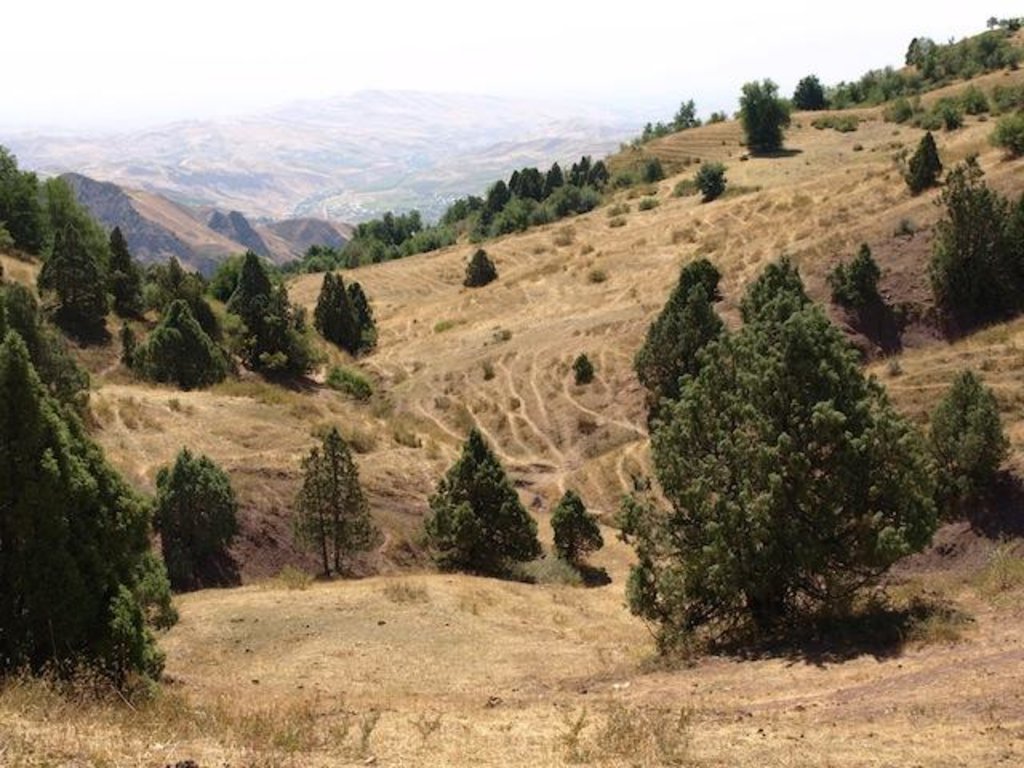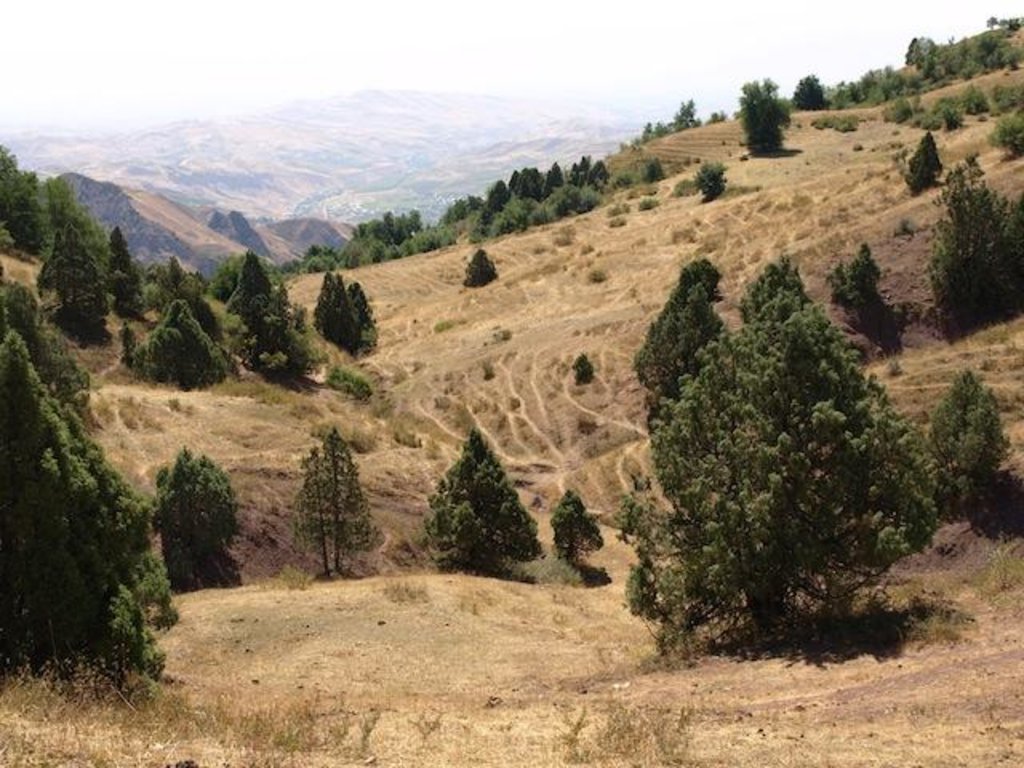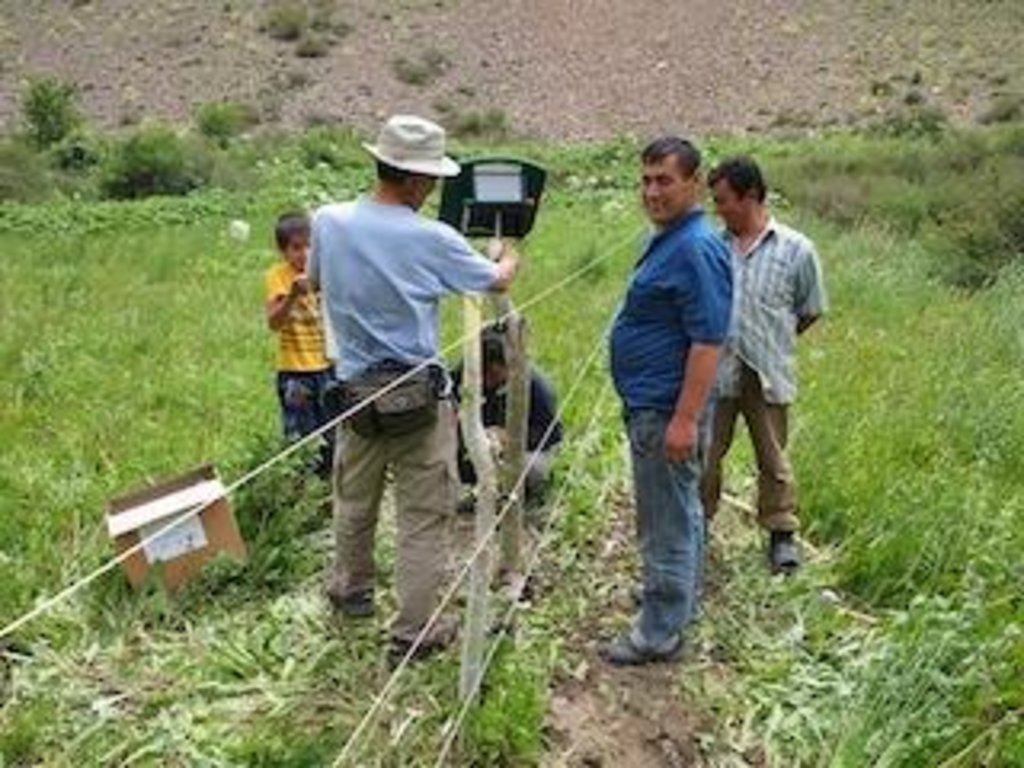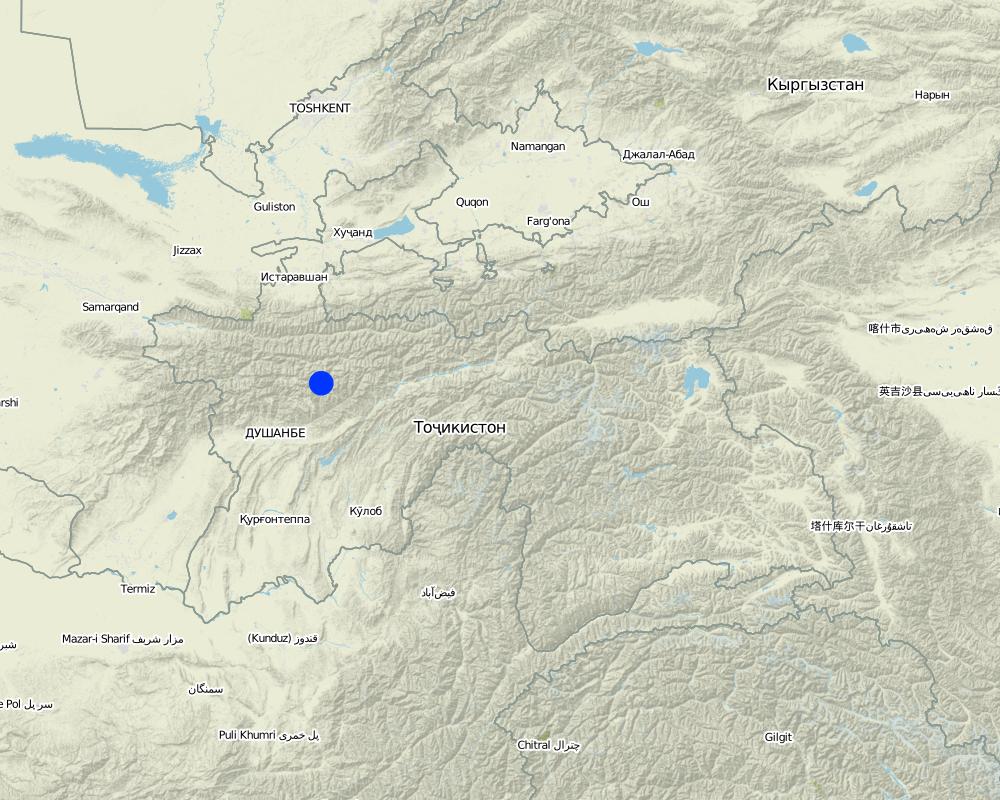Sustainable managements on pasture and forest lands based on natural regeneration by electrified fences [Таджикистан]
- Создание:
- Обновить:
- Составитель: Kakubari Yochitaka
- Редактор: –
- Рецензент: David Streiff
approaches_2451 - Таджикистан
Просмотреть разделы
Развернуть все Свернуть все1. Общая информация
1.2 Контактные данные специалистов и организаций, участвующих в описании и оценке Подхода
Специалист по УЗП:
Aidov Madibron
SFA
Российская Федерация
Специалист по УЗП:
Kumalova Rina
FRI
Российская Федерация
translator/assistant:
Shoh Sharipov
Российская Федерация
Название организации (-ий), содействовавших документированию/оценке Подхода (если применимо)
Shizuoka University - Япония1.3 Условия, регламентирующие использование собранных ВОКАТ данных
Когда были собраны данные (на местах)?
11/06/2011
Составитель и ответственный/-ые специалист(-ы) согласны с условиями, регламентирующими использование собранных ВОКАТ данных:
Да
1.4 Ссылка (-и) на Анкету (-ы) по Технологиям УЗП
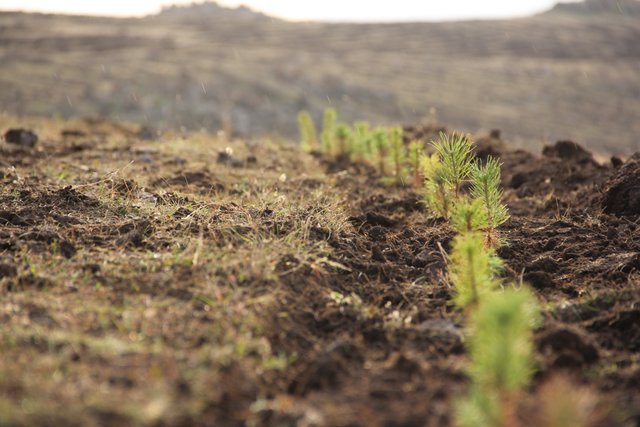
High-altitude afforestation for erosion control [Армения]
Afforestation is a key technologies to protect soil against erosion and provide a wide range of ecosystem services. In this case, afforestation at high altitudes, which is particularly challenging, with the primary purpose of erosion control were planted in small patches with different methods. They form the basis for future …
- Составитель: Hanns Kirchmeir
2. Описание Подхода УЗП
2.1 Краткое описание Подхода
Sustainable managements on pasture and forest lands based on natural regeneration by electrified fences
2.2 Подробное описание Подхода
Подробное описание Подхода:
Aims / objectives: The aim is to avoid any animals grazing in the targeted areas by establishing electrified fences around the areas, conserving natural conditions of pasture and forestry lands, strengthening the communities’ incomes growth, and planting trees resilient to climate change, thereby contributing to maintaining soil of the areas healthy.
Methods: The project facilitated the following activities: Setting electrified fences that are generated by solar power, strengthening the regeneration of natural forest tree, planting fruiting trees for their sustainable incomes, planting trees such as juniper, pine, poplar, willow, among others. Planting Rosa canina in side of fence and R.C. grown up 2 meter height a few years later and functions as a natural fence. Electrified fence is moved to other site. Also, the project was heavily involved with farmer participation for the planning, fundraising, and implementation with farmers’ initiative.
Stages of implementation: 1. Awareness raising, 2. On the job training, 3. management activity planning, 4. Implementation, 5. Monitoring, 6. Readjustment based on results, 7. Further replication in new area.
Role of stakeholders: The Project had a leading role in initiation, orientation, awareness raising, mobilization, training, consultancy, input provision and mediation of communication. The local farmers have been actively participating, have provided labor input / financial contribution, provided indigenous knowledge and skills. Local authorities - providing land titles, participation in planning and decision making process. There are 5 households involved with in this project. The two Tajik communities (Duoba in Hisor and Kumarg in Ayni), each of which is consisting of 35 members. The members of all households took part in discussion rounds and training. Women: farmers came to the discussions together with their wives in certain level; the women took part in training, in implementing almost all of the adoption measures, and equally benefited from the project. However, they were not involved in decision making.
2.3 Фотографии, иллюстрирующие Подход
2.5 Страна/ регион/ место, где применялся Подход
Страна:
Таджикистан
Административная единица (Район/Область):
Tajikistan
Более точная привязка места:
Hisor/ Ayni
Map
×2.6 Даты начала и окончания реализации Подхода
Год начала реализации:
2009
Год окончания (Если Подход больше не применяется):
2012
Комментарии:
We have performed to collect about various ecological disasters in Tajikistan since Sep.2009, and over 75 base line research sites are done by Japanese Society of Promotion for Science (JSPS). Japanese International Cooperation Agency (JICA) supported us. Research title is as follow; Reforestation and forestation in aim of reduction of generation of greenhouse gases and lessening of global warming
2.7 Тип Подхода
- в рамках проекта/ программы
2.8 Каковы цели/ задачи Подхода
The Approach focused mainly on SLM with other activities (natural regeneration, pasture management, protecting fruits trees, strengthening community incomes, resilient to climate change )
The aim is to avoid any animals grazing in the targeted areas by establishing electrified fences around the areas, conserving natural conditions of pasture and forestry lands, strengthening the communities’ incomes growth, and planting trees resilient to climate change, thereby contributing to maintaining soil of the areas healthy.
The SLM Approach addressed the following problems: Lack of land tenure rights implementation. Nominal state farm reorganization. Low agricultural production - lands depleted of nutrients, very low yields, no crop rotation, all of which have led heavy concentration on overgrazing by domestic cattle. Soil degradation particularly by heavy precipitation and gully formation. Lack of technical knowledge and awareness of soil & water conservation measures. Lack of cash to invest in development of land - just limited capacity to invest but need external financial input. Poverty - underlying cause of general lack of potential to invest in development.
2.9 Условия содействующие применению Технологии/ Технологий в рамках Подхода или затрудняющие его
Наличие/ доступность финансовых ресурсов и услуг
- затрудняют
Lack of land tenure rights implementation. Nominal state farm reorganization. Low agricultural production - lands depleted of nutrients, very low yields, no crop rotation, all of which have led heavy concentration on overgrazing by domestic cattle. Soil d
Treatment through the SLM Approach: 1) The project was mainly supported by Japan Society for Promotion of Science and Japan International Cooperation Agency with some portion of Tajik government’s sources. However, the inputs (poles and wires) are almost fully available on the local market
Институциональные условия
- затрудняют
1) The project was mainly supported by Japan Society for Promotion of Science and Japan International Cooperation Agency with some portion of Tajik government’s sources. However, the inputs (poles and wires) are almost fully available on the local market
Treatment through the SLM Approach: Knowledge and technologies are shared with S.F.A. in Dushanbe when necessary. By coordinating with S.F.A., the project obtained the right to use the land for planting. As well, local offices of State Forest Agency and local authorities and communities are
Нормативно-правовая база (землевладение, права на земле- и водопользование)
- содействуют
The existing land ownership, land use rights / water rights helped a little the approach implementation: I think it is very serious relationship between Land user ship and local citizens. and forest code is not coming enter on current datum. I think it is very important to be managed by new forest code.
- затрудняют
Implementing the land tenure law and the privatization of state farms is still a difficult process with many inconsistencies for people claiming a land title in the area.
Treatment through the SLM Approach: AS shown above, by coordinating with State Forest Agency, the project was able to obtain land usage agreement on specific land plots.
3. Участие и распределение ролей заинтересованных сторон
3.1 Заинтересованные стороны, участвующие в реализации Подхода и их роли
- местные землепользователи/ местные сообщества
Men and women have both played an equal part in the orientation and planning sessions; men have played bigger role in the organization of activities, in the implementation of more manual work, whereas, women took part in the lighter work and in routine maintenance
- эксперты по УЗП/ сельскому хозяйству
- учителя/ преподаватели/ школьники / студенты
- общественные организации
- частный сектор
- местные власти
- государственные власти (отвечающие за планирование или принятие решений)
- международные организации
3.2 Участие местных землепользователей/ местных сообществ на разных стадиях реализации Подхода
| Участие местных землепользователей/ местных сообществ | Перечислите участников и опишите их вовлеченность | |
|---|---|---|
| инициирование/ мотивация | внешняя поддержка | farmers meeting with the team for orientation explaining goals, objectives. The communities who had strong understanding and willingness have only been selected. |
| планирование | интерактивное | on site planning with farmers |
| выполнение | интерактивное | training on the job, material inputs, and labor provision, cross visits |
| мониторинг/ оценка | интерактивное | Visits from the team at least once a month since the beginning, communications on ongoing activities, finding solutions. |
| Research | самоорганизация | The team shares with the farmers the findings. |
3.3 Схема реализации (если имеется)
Описание:
Organization of the sustainable Land management for pasture and forest lands is described in organization chart. It will be divided with three parts; career training, Basic research and afforestation.
Автор:
yoshitaka Kakubari (Univ. of Shizuoka, Japan)
3.4 Принятие решений по выбору Технологии/ Технологий УЗП
Укажите, кто принимал решение по выбору применяемой Технологии/ Технологий:
- в основном землепользователи при поддержке специалистов по УЗП
Поясните:
mainly by sustainable land management specialists from Shizuoka University, State Forest Agency, and Forestry Research Institute, with consultation of land users.
Decisions on the method of implementing the SLM Technology were made by mainly by land users supported by SLM specialists. mainly by sustainable land management specialists from Shizuoka University, State Forest Agency, and National Academy of Science, with consultation of land users.
4. Техническая поддержка, повышение компетенций и управление знаниями
4.1 Повышение компетенций/ обучение
Проводилось ли обучение землепользователей/ других заинтересованных лиц?
Да
Укажите, кто проходил обучение:
- землепользователи
- местный персонал/консультанты
Если существенно, укажите гендерный и возрастной состав, статус, этническую принадлежность и т.д.
Training provided for local communities, local authorities, State Forest Agency
Тип обучения:
- в ходе работы
- обмен опытом между фермерами
- опытные участки
- общие собрания
- курсы
Рассматриваемые темы:
Training focused on how to plant trees and how to manage them, how to set up the fences, how to use the fences,
4.2 Консультационные услуги
Есть ли у землепользователей возможность получать консультации?
Да
Укажите, где именно оказываются консультационные услуги:
- на полях землепользователей
Описание/ комментарий:
Name of method used for advisory service: Prof.Dr.Yoshitaka Kakubari;
Key elements: consultation on fencing concepts and choice for preventing from overgrazing, capacity building in strategy design, draft development plan for fence managements; 4. Land use management design considering soil depth, inclination and exposure. 5. Consultation on irrigation design, piping and making water channels 6. Consulting dry farming for good trapping of surface runoff and terrace planting method. 7. Treatment of tree saplings and transportation to the field. 8. Treatment of tree sapling on nursery, light and water regulation. 9. Grand treatment and cleaning, transportation of fertilization 10. Consultation on Planting, and judgment of leaf
Advisory service is totally inadequate to ensure the continuation of land conservation activities; The extension system is inadequate to ensure continuation of activities. The government branches need more development and organization to become able to manage land conservation activities; an independent advisory service is not in place, the only potential still exists within the DWHH Project
4.3 Институциональная (организационная) поддержка
В ходе реализации Подхода были ли организованы новые институциональные структуры или поддержаны уже существующие?
- да, немного
Укажите уровень, на котором структуры были укреплены или вновь созданы:
- местные
- advising to make a land use managements
4.4 Мониторинг и оценка
Являются ли мониторинг и оценка частью Подхода?
Да
Комментарии:
bio-physical aspects were regular monitored by other through observations; indicators: Frequent visits and observations by the project team - tree planting, growing situation, regeneratio
bio-physical aspects were regular monitored by None through measurements; indicators: Ad hoc observations by the project team - labor availability, etc.
technical aspects were ad hoc monitored by None through observations; indicators: Regular measurements by the project team- fodder produced cent/ha, vegetables
socio-cultural aspects were regular monitored by None through observations; indicators: Ad hoc observations by land users and frequent visits by the project team
economic / production aspects were ad hoc monitored by None through measurements; indicators: Ad hoc observations by land users and frequent visits by the project team - technology adaptation ba
area treated aspects were None monitored by None through observations; indicators: None
management of Approach aspects were None monitored by None through observations; indicators: None
There were no changes in the Approach as a result of monitoring and evaluation: There were no changes in the approach. However, the trees planted by the local communities after technical advice and demonstration was not appropriately planned, therefore, after the monitoring and evaluation, they were re-planted. Also, the project team realized that it would be better to have plant relatively young trees as they adapt better in the targeted areas.
There were few changes in the Technology as a result of monitoring and evaluation: I'm able to confirm them after and after they can treat tools and planting materials before they have done. It was very roughly to treat root system of planting saplings, therefore material becomes very weak and easy to die.
4.5 Научные исследования
Были ли научные исследования частью Подхода?
Да
Укажите темы исследований:
- экология
Напишите подробнее и назовите тех, кто выполнял исследования:
It focuses on observation of the trees and other plants in the fenced areas, especially regeneration of originally seeded plants. Tree growth rates and damages of grazing are recorded inside and outside of fencing area. For getting evidence by electric fences, we will try a small experiment. We shall confirm that electric fence protects plants from grazing of domestic animals.
Research was carried out both on station and on-farm
5. Финансирование и внешняя материальная поддержка
5.1 Годовой бюджет мероприятий по УЗП в рамках Подхода
Если точный годовой бюжет неизвестен, укажите примерный диапазон затрат:
- 10000-100000
Комментарий (например, основные источники финансирования/ ключевые доноры):
Approach costs were met by the following donors: international (Japanese Society Promotion of Sciences (JSPS) and JICA): 100.0%
5.2 Финансирование и внешняя материальная поддержка, предоставляемая землепользователям
Предоставлялась ли землепользователям финансовая/ материальная поддержка для применения Технологии /Технологий?
Нет
5.3 Субсидии на отдельные затраты (включая оплату труда)
- оборудование
| Укажите, какие ресурсы были субсидированы | В какой степени | Опишите субсидии подробнее |
|---|---|---|
| инвентарь/ инструменты | профинансированы полностью | Shovel, hoe, pipe, iron wire etc |
- сельскохозяйственные
| Укажите, какие ресурсы были субсидированы | В какой степени | Опишите субсидии подробнее |
|---|---|---|
| planting materials | профинансированы полностью | |
- строительные материалы
| Укажите, какие ресурсы были субсидированы | В какой степени | Опишите субсидии подробнее |
|---|---|---|
| древесина | профинансированы полностью | fences, wooden pole |
- инфраструктура
| Укажите, какие ресурсы были субсидированы | В какой степени | Опишите субсидии подробнее |
|---|---|---|
| irrigation system | профинансированы полностью | |
- другие
| Другой (какой именно) | В какой степени | Опишите субсидии подробнее |
|---|---|---|
| material transportation | профинансированы полностью |
Если труд землепользователя был существенным вкладом, укажите, был ли этот вклад:
- за денежное вознаграждение
Комментарии:
It is important to pay to land users and regional villagers.
Also labour is paid in food-for-work
5.4 Кредитование
Предоставлялись ли в рамках Подхода кредиты на мероприятия УЗП?
Нет
6. Анализ влияния и заключительные положения
6.1 Влияние Подхода
Сумел ли Подход помочь землепользователям внедрить и поддерживать технологии УЗП?
- Нет
- Да, немного
- Да, умеренно
- Да, существенно
We have oft said to local villagers how to take a treatment and transportation of materials to pilot site, and how to make a water irrigation channels etc.
Сумел ли Подход расширить возможности социально и экономически уязвимых групп?
- Нет
- Да, немного
- Да, умеренно
- Да, существенно
Yes, it is still not obvious.
Сумел ли Подход разрешить правовые проблемы землевладения/ землепользования, препятствующие использованию технологий УЗП?
- Нет
- Да, немного
- Да, умеренно
- Да, существенно
I have already described in above the paragraph about the reason.
Did other land users / projects adopt the Approach?
- Нет
- Да, немного
- Да, умеренно
- Да, существенно
We make a two pilot sites, Duoba in Hisor and 2 sites Kumarg sites in Ayni districts for implementations to other citizens, and welcome to many guests from other district and sometimes taking many visitors from Governmental organizations.
Did the Approach lead to improved livelihoods / human well-being?
- Нет
- Да, немного
- Да, умеренно
- Да, существенно
It is not still positive changes of local citizens but I believe changing positive in future.
Did the Approach help to alleviate poverty?
- Нет
- Да, немного
- Да, умеренно
- Да, существенно
I have not still any evident for explanations.
6.2 Основные причины, побуждающие землепользователей внедрять УЗП
- рост продуктивности
introducing to fruits trees at first , and after introducing forest trees
- рост прибыли (доходности) и рентабельности
ntroducing to fruits trees at first , and after introducing forest trees
- снижение объёма работ
It is needful and important to attend of women
- материальное стимулирование/ субсидии
to monitor money flows, and release information.
- нормативно-правовое регулирование (штрафы)/ контроль
It needs but it is difficult to introduce at first.
- престиж, общественное давление/ солидарность
it is important to manage together with local citizens
- причастность к движению/ проекту/ группе/ сети
it will be getting serious situation by new group and network
- экологическая сознательность
- улучшение эстетической привлекательности
- well-being and livelihoods improvement
6.3 Долгосрочная устойчивость мероприятий в рамках Подхода
Могут ли землепользователи самостоятельно (без внешней поддержки) продолжать применение того, что было реализовано в рамках Подхода?
- да
Если да, опишите как:
Finally it will be getting the sustainable land management condition in future without any support.
7. Справочные материалы и ссылки
7.1 Методы сбора/источники информации
- выезды на места, полевые обследования
- опросы землепользователей
7.2 Ссылки на опубликованные материалы
Название, автор, год публикации, ISBN:
JSPS Home Page 'Reforestation and forestation in aim of reduction of generation of greenhouse gases and lessening of global warming, Yoshitaka KAKUBARI, 2009
Где опубликовано? Стоимость?
JSPS, Japan
Ссылки и модули
Развернуть все Свернуть всеСсылки

High-altitude afforestation for erosion control [Армения]
Afforestation is a key technologies to protect soil against erosion and provide a wide range of ecosystem services. In this case, afforestation at high altitudes, which is particularly challenging, with the primary purpose of erosion control were planted in small patches with different methods. They form the basis for future …
- Составитель: Hanns Kirchmeir
Модули
Нет модулей


